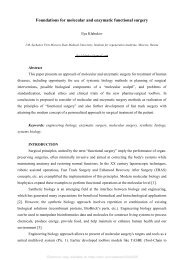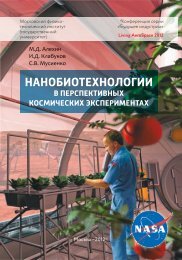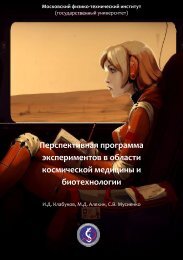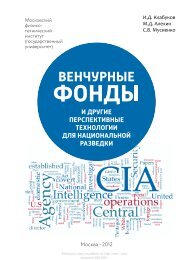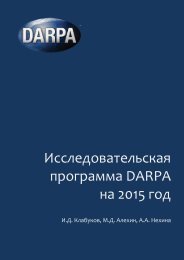Engineering Biology Problems Book (2021, Obninsk Edition)
Create successful ePaper yourself
Turn your PDF publications into a flip-book with our unique Google optimized e-Paper software.
SOLUTION:
It would seem that microcrack formation can in no way improve the structural properties of a
material. However, the process of formation, growth, and filling of such microcracks with special
connections can be considered as an additional reinforcing network working in tension and
shear/bending.
1.20. The Home Cultivation. The use of bacterial concrete only requires tweaking technology and
existing regulations to accommodate living organisms. However, we would like to take the next step,
to learn how to grow a whole house as if it were a tree or a coral reef. Suggest a way to do this (e.g.,
from calcium contained in calcareous soils) and estimate the speed of erecting a 30-story house in this
way. Suggest an alternative to rebar (e.g., spidroin), and a way to mold the supporting and enclosing
structures.
SOLUTION:
A way to mold such a "life-like" house could be to use communities of microorganisms that form
large-scale colonies. The problem is the need for rapid growth to fit into a single season, which may
require prior preparation of the site (e.g. with special fertilizers).
Variant shaping under the influence of external factors can also be a problem (or an advantage - due to
the possibilities of individual customization of such a dwelling).
1.21. Bacteria-made camera for the new iPhone. The modern Nikon digital camera gives a
resolution of more than 16 Megapixels. It seems attractive to create analogs of cameras based on
living organisms, using the properties of photosensitive proteins for this purpose. For example,
bacteriorhodopsins - membrane light-sensitive proteins that carry a proton across the plasma
membrane. What resolution can a camera matrix assembled from Nanoarchaeum equitans archaea
with a diameter of 0.35-0.50 µm provide?
SOLUTION:
A photographic matrix digitizes (divides into pieces - "pixels") the image that is formed by the camera
lens. There is an approximate relation in photographic optics: if we express the resolution of the
photodetector in lines per millimeter (or pixels per inch), let`s designate it as M, and let`s express the
resolution of the lens (in its focal plane), let`s designate it as N, then the resultant resolution of the
lens+photodetector system, let`s designate it as K, can be found by the formula
or
This relation is maximal at N=M when resolution is N/2, that is why the resolution of the lens should
correspond based Several models describing that of the photodetector.
Modern digital matrices have the pixel size defining resolution, which varies from 0,0025 mm to
0,0080 mm for different matrices, while most modern matrices have 0,006 mm. Since two dots will
differ if there is a third (unlit) dot between them, the resolution corresponds to a distance of two
pixels, i.e:
M=1/2p, where p is the pixel size.
Digital matrices have a resolution from 200 lines per millimeter (large-format digital cameras) up to
70 lines per millimeter (web cameras and cell phones).
In our case, the answer will depend on the characteristics and form factor of such a device. In the case
of the bacterial film the "pixel" size will be approximately 0.0001 mm (linear size of the bacterium),
so using other standard characteristics of the photographic circuit its resolution will be 5 Mpixels in
the monochrome version. If we want to get a color image, the resolution will be no more than 1-2
Mpix.
1.22. Human Blood Biofactory. In 2011 the U.S. agency DARPA completed a project to produce
human blood cells from stem cell culture. Theoretically, this should make the institute of blood donors
unnecessary for humans. However, the blood obtained by such technology is embryonic, and its use
may be risky. A biofactory for the production of blood would include a bone marrow analog, a "niche"





